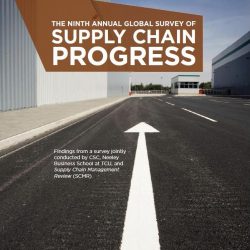Resistance to change remains biggest obstacle to digital supply chain investment

End-to-end supply chain visibility is ranked the number one driver of investment (77%), according to a recent survey by JDA Software and the audit, tax and advisory firm KPMG. Maintaining legacy systems is in second place. However, this focus on legacy technologies is draining resources which could otherwise be directed elsewhere and hence holding back the ability to innovate. This can be seen as part of a wider resistance to change, which is ranked the number-one investment challenge by both retailers and manufacturers.
“While management buy-in to supply chain investment has gone up, getting the organization to adapt has become harder,” is how the report on the Digital Supply Chain Investment Survey 2019, which was conducted by Incisiv, summarizes the investment challenge.
Many of the 93 supply chain executives surveyed indicate they are planning to pilot or deploy supply chain technologies over the next two years aimed at improving visibility. The key technologies on this list are cognitive analytics (82%), artificial intelligence/machine learning (62%), digital control towers (55%) and IoT/connected devices (50%). The highest-value use cases for artificial intelligence are seen as inventory optimization, customer-facing pricing (by retailers), demand forecasting (by manufacturers) and distribution optimization (by transport and logistics companies). The speed to market is also becoming increasingly important, as demonstrated by the fact that it has made it into the top three ‘investment drivers’ for the first time this year.
Inability to assess technology impact
In terms of obstacles, supply chain executives in the retail sector rank the inability to assess technology impact as an ever-tougher investment challenge (38% in 2019 compared to 20% in 2018); greater scrutiny of business cases is reducing planned deployments and pilots of new technologies. Meanwhile, manufacturers consider insufficient IT budgets to be a growing problem (16% in 2019 compared to 10% in 2018).
When it comes to the cloud, retailers regard it as a key agility enabler. It is seen as having twice as much impact on business agility compared to any other technology and is fast becoming the standard in the sector. In contrast, cloud adoption is lagging behind in manufacturing and 3PL/warehousing & distribution.
Overall, while supply chain executives believe they have the right technology toolset, the necessary talent and skills required to rise to the digital challenge and also know how to use data and analytics, they recognize that they need to improve their ability to collaborate as well as to innovate.










